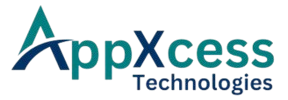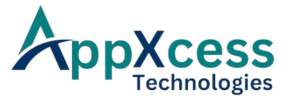The Internet of Things (IoT) is revolutionizing industries by connecting devices, systems, and applications in ways that enhance functionality, efficiency, and user experience. However, developing IoT hardware involves navigating complex challenges, including hardware design, component integration, power management, and scalability. As the demand for IoT devices grows, the need for streamlined IoT hardware development processes has become more critical than ever. Thanks to advancements in technology and design methodologies, businesses can now accelerate the development of IoT hardware, reduce time-to-market, and ensure that devices meet the required performance and durability standards.
1. Prototyping with Rapid Development Tools
One of the key ways to streamline IoT hardware development is through the use of rapid prototyping tools and techniques. By utilizing development platforms such as Arduino, Raspberry Pi, and other prototyping boards, engineers can quickly build and test prototypes without the need to design custom circuits from scratch.
These platforms provide pre-built hardware components that simplify the process of integrating sensors, processors, and wireless communication modules, enabling faster iteration cycles. Rapid prototyping not only helps speed up development but also allows developers to test and validate IoT hardware designs in real-world conditions, identifying potential issues early in the development process.
2. Modular Design for Flexibility and Scalability
Modular design is an essential approach in streamlining IoT hardware development. By using modular components that can be easily swapped or upgraded, engineers can create flexible, scalable IoT devices that can evolve with changing requirements or technological advancements. This approach allows for faster development and reduces the complexity of designing hardware from the ground up.
For instance, modules such as Wi-Fi or Bluetooth chips, power management units, and sensors can be designed independently and integrated into various IoT devices. This modularity makes it easier to scale production and enables rapid customization based on specific use cases or industries. By incorporating modular design into hardware development, manufacturers can also reduce development costs and time, as well as ensure faster iteration cycles for product updates.
3. Leveraging IoT Hardware Development Kits
IoT hardware development kits (HDKs) are another powerful tool for streamlining hardware development. These kits typically include all the necessary components, software, and documentation needed to build an IoT device, making them ideal for accelerating development cycles. HDKs are especially useful for companies looking to prototype and test IoT devices without investing in expensive custom hardware designs.
Many IoT HDKs are designed with ease of use in mind, with intuitive software and hardware interfaces that allow developers to get started quickly. With a development kit, engineers can focus on designing the specific application or functionality of the device, while the kit provides the necessary base hardware to make development more efficient and cost-effective.
4. Using Simulation and Modeling Software
Simulation and modeling software can significantly streamline the IoT hardware development process by allowing engineers to test and optimize their designs in a virtual environment before building physical prototypes. Tools like LTspice, MATLAB, and Simulink help engineers model electronic circuits, simulate power consumption, and analyze the behavior of sensors and communication systems.
By using simulation software, developers can identify potential flaws or inefficiencies in their designs early in the process, reducing the number of physical prototypes needed and accelerating development cycles. This virtual testing also helps ensure that the final product performs as intended, saving both time and resources.
5. Automating Testing and Quality Control
Testing and quality control are crucial steps in the development of any IoT hardware. To streamline these processes, automation tools are increasingly being used to conduct rigorous tests on IoT devices and ensure they meet all necessary performance and durability standards.
Automated testing tools can test a range of factors, including signal strength, data transmission rates, power consumption, and environmental durability. By automating these tests, manufacturers can speed up the validation process, ensure consistent quality, and detect issues that might be missed during manual testing. Automation not only improves efficiency but also reduces human error, leading to better-quality products and faster time-to-market.
6. Cloud-Connected Development and Collaboration
Cloud-based development platforms are playing an increasingly important role in streamlining IoT hardware development. These platforms allow engineers to collaborate in real-time, access design files, and run simulations from any location. This cloud-connected approach enhances collaboration among team members, especially in large, distributed teams working on complex IoT projects.
Cloud platforms also facilitate data sharing and version control, making it easier to track design changes and updates. As teams work on different aspects of the hardware and software components, the ability to share data and access centralized resources accelerates development and reduces the time spent on coordination and communication. Cloud-based platforms also enable more efficient management of the entire IoT development lifecycle, from design and prototyping to testing and production.
7. Power Management and Optimization
Power management is a critical consideration in IoT hardware development, especially for battery-powered or energy-harvesting devices. Efficient power consumption can extend the lifespan of IoT devices, reduce operational costs, and improve overall performance. Streamlining power management involves using low-power components, optimizing circuit designs, and implementing advanced power-saving techniques like sleep modes and dynamic voltage scaling.
By integrating power optimization solutions early in the development process, engineers can create IoT devices that consume less power and have longer battery life, which is essential for many IoT applications, such as wearable devices, remote sensors, and smart home products. The use of power management ICs (integrated circuits) and advanced battery management systems ensures that IoT devices operate efficiently, reducing the need for frequent maintenance and replacing batteries.
8. Accelerating Time-to-Market with Lean Development
Adopting lean development principles is another effective way to streamline IoT hardware development. Lean development focuses on minimizing waste, maximizing efficiency, and accelerating product delivery by adopting an iterative approach to design and development. By building small, testable prototypes and incorporating user feedback early in the process, engineers can make adjustments quickly and avoid costly delays later on.
Lean development also emphasizes collaboration between design, engineering, and manufacturing teams to identify and eliminate bottlenecks, ensuring that the development process remains agile and efficient. This approach helps bring products to market faster, enabling companies to stay competitive in the rapidly evolving IoT industry.
Conclusion
Streamlining IoT hardware development is essential to keeping pace with the rapidly growing demand for connected devices. By leveraging tools like rapid prototyping, modular design, simulation software, and automated testing, engineers can create high-quality IoT devices more efficiently and at a lower cost. Additionally, adopting cloud-based collaboration, power optimization, and lean development techniques further accelerates the process, enabling faster time-to-market and ensuring that products meet performance and sustainability requirements.
At AppXcess Technologies, we specialize in providing innovative IT solutions that help businesses streamline their IoT hardware development processes. Let us help you accelerate your IoT projects and bring your devices to market faster, with improved functionality and efficiency.
© AppXcess Technologies 2025. All Rights Reserved.

